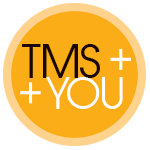Tagged: FAQs
-
AuthorPosts
-
July 28, 2014 at 9:55 pm #3920
While both TMS and Electroconvulsive Therapy (ECT) are effective in the treatment of depression, there are many differences in safety and tolerability. Both are designed to treat depression through the application of energy into the brain, but the similarities quickly dissolve.
ECT is a much more intensive and invasive procedure than is TMS Therapy. ECT is designed to create seizures and requires hospitalization. The side effects from ECT are much more intense and occur in more instances. TMS is an outpatient procedure with little side-effects.
August 28, 2014 at 5:52 pm #4018I’ve looked into this quite a bit as I was concerned the two would be similar. This is just my take on the two based on my research into it:
Although TMS and ECT may seem as if they are the same, there’s a big difference between them. TMS is based on magnetic pulses that penetrate a specific, quarter-sized area of the skull. The magnetic stimulation to the brain creates a gentle electric impulse that awakens the neural pathways only in the area of the brain that pertains to depression.
On the other hand, electroconvulsive therapy is precisely that—electricity that is delivered to the entire brain and causes a controlled seizure. The seizure induces the brain to produce the deficient neurotransmitters, thus improving the neural activity. This process can be effective in severely depressed patients and people who suffer from psychosis.
Studies have been done comparing the efficacy of both therapies and, so far, they seem to be on a par with each other. However, side effects and logistics are factors to consider.
ECT may result in mild confusion and short-term memory loss after treatment. Other than a remote risk of seizure, TMS has no reported side effects. However, there may be some discomfort at the site of the magnetic pulse coil on the scalp, but most patients find relief by taking an over-the-counter analgesic and/or having the TMS coordinator adjust the coil to a more comfortable position.
As for logistics, an ECT patient is required to have someone drive him or her to and from treatments because it requires general anesthesia in a hospital setting with a monitored recovery period. A TMS patient can drive to and from a TMS practice office for a treatment that lasts less than an hour. In my experience, a manicure/pedicure takes more time than a TMS treatment.
April 15, 2016 at 2:23 am #5353As someone who’s had ECT and is currently undergoing TMS, the difference between the two is enormous. With ECT I had to quit work for weeks and have a relative drive me to and from shock appointments. TMS appointments are as easy as going to the dentist, with only a mild headache as a side-effect. I haven’t had to take off nearly as much work.
A big draw of TMS to me was the low occurrence of side-effects. I had two bouts of ECT and while the first course of shock therapy helped my depression, it caused severe memory loss. I lost almost 4 years of episodic memory and it’s never come back. My short-term memory has also been impaired.
The biggest difference between ECT and TMS for me was insurance coverage. My insurance will cover electroshock therapy, but refused coverage for TMS because it’s considered “experimental.”
I have no idea if TMS will work, but fingers are crossed…
-
AuthorPosts
The topic ‘Is TMS Like ECT?’ is closed to new replies.
